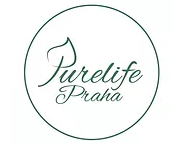THE LIFE OF TOFU
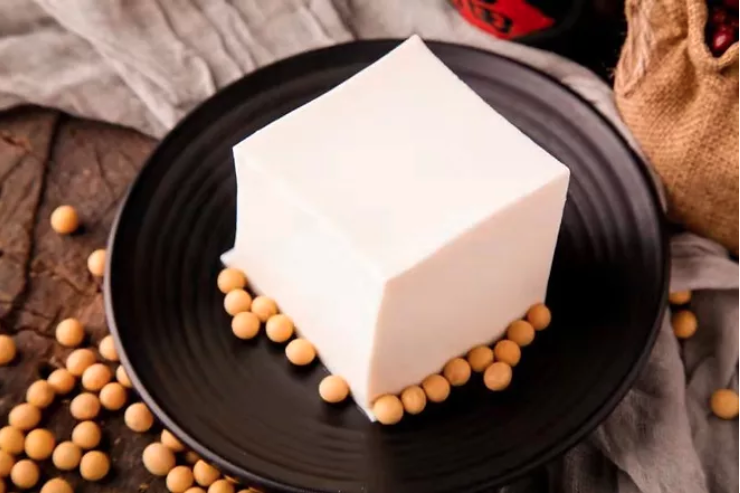
Pure diet | vegan recipes | Tofu
TOFU: A VITAL INGREDIENT OF THE PURE VEGAN DIET
1. THE HISTORY OF TOFU
Legend has it that the mother of Liu An, King of Huainan (177-122 BC), liked to eat soybeans. In 196 BC, when his mother was ill and could not eat whole soybeans, Liu An had the beans ground into powder. Afraid that the powder would be too dry, he added water and boiled it into soy milk. Afraid the taste would be too weak, he added some brine. The result coagulated into lumps he named ‘tofu flowers.’
The King’s mother was happy to eat it and soon recovered, so tofu was handed down to each successive generation. Tofu was probably invented by Liu An while organizing the practice of alchemists. Alchemists used minerals and inorganic salts in their labors, and occasionally found gypsum or other salts to solidify soy milk in the making of tofu.
The picture below depicts the traditional process of making tofu: from soybean to cleaning, soaking to grinding, filtering to cooking, solidification to molding, and on to the finished product. Nowadays, as technology continues to grow, the process has become far more industrialized. Yet tofu is still suitable for our daily needs.
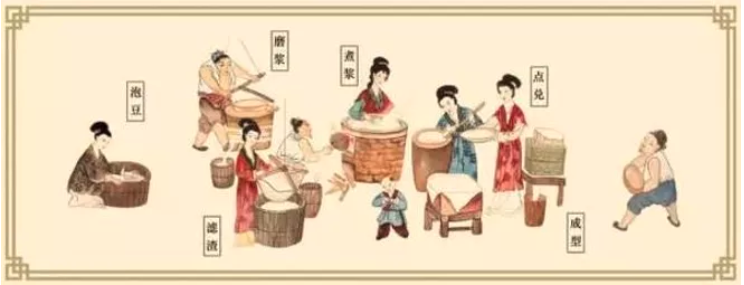
Pure diet | vegan recipes | Tofu
https://j.17qq.com/article/ceruhtscx.html
2. WHY DOES THE BODY NEED TOFU?
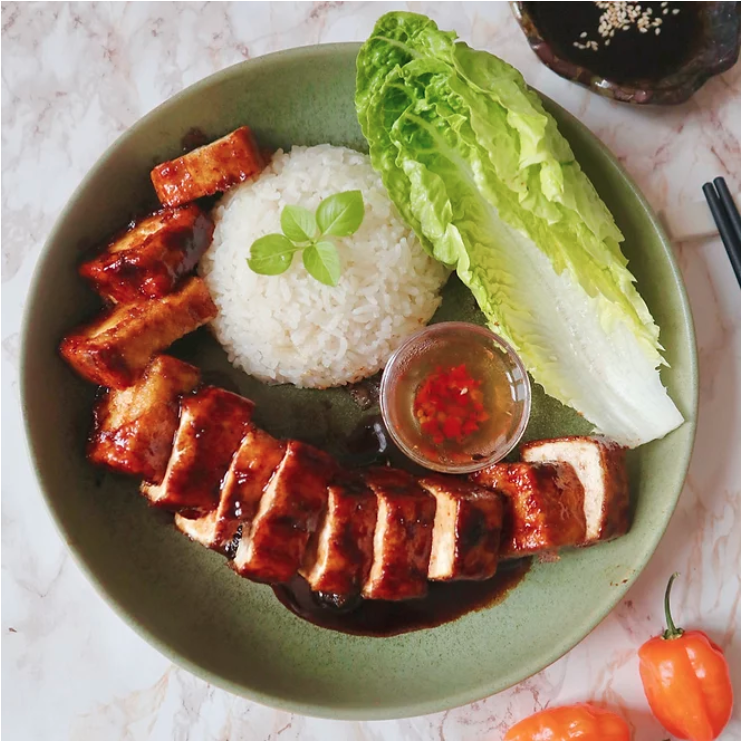
Pure diet | vegan recipes
Vegan Char Siu tofu recipe can be found on our Instagram: purelifepraha
One of the first questions people have when changing to the pure diet is “How to ensure my daily intake of protein?” Tofu can definitely give you a satisfying answer, as it is relatively high in protein (about 10.7% for firm tofu and 5.3% for soft or “silken” tofu, with about 5% and 2% fat, respectively). Regarding soy, the FDA has stated that 25 grams of soy protein a day, as part of a diet low in saturated fat and cholesterol, may reduce the risk of heart disease.
According to traditional Chinese medicine, tofu is both nourishing and cleansing as a health supplement. It can replenish Qi, clear heat, moisten dryness, generate fluid, quench thirst, and clean both the stomach and intestines. Tofu is more suitable for people with a hot constitution, bad breath, thirst, gastrointestinal upset and for recuperating after a fever. As good as tofu is, too much of it can be dangerous. Tofu is rich in protein, but eating too much of it at one time not only hinders the absorption of iron, but leads to abdominal distension and diarrhea. It can also cause indigestion.
3. SELECT YOUR FAVORITE TOFU!
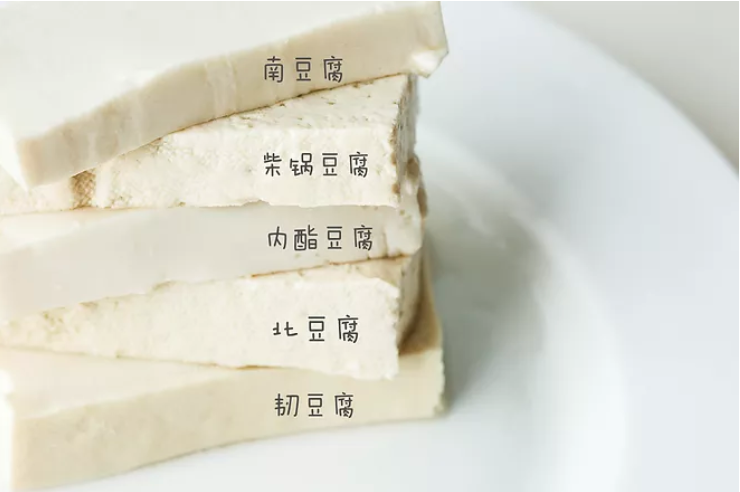
http://wap.wenyijcc.com/core/article/detail.aspx?id=2965
Can you distinguish between the five different types of tofu in the photo above? Tofu is a popular option in most Asian dishes, and has different names in different countries. The following list contains some of the key varieties:
- Soft tofu (tender tofu) has a soft texture, like pudding or steamed eggs. Southern tofu belongs to the soft tofu category.
- Board tofu (old tofu, firm tofu) feels hard, like Western cheese. Northern tofu belongs to the hard tofu category.
- Frozen tofu is made by putting a plate of bean curds into the freezer and thawing it out again. The inside becomes honeycombed, to better absorb the taste of soup. Frozen tofu is best used for braising in soy sauce, as an addition to boiled soups, or with traditional hot pot.
- Tofu strips (dried bean curd, Uzene tofu) is usually served shredded or fried. After dehydration, dried white bean curd can also be used in spicy bean sauce.
- Fried tofu (tofu bubble) is produced by grinding, compacting and frying the pulp to a golden-brown, until it becomes soft and elastic.
- Silken tofu originated in Japan, where more delicate textures are preferred. Kapok tofu is made by extruding water from silken tofu.
- Lactone tofu is another Japanese variety, using gluconolactone as a coagulant instead of magnesium chloride or calcium sulfate.
4. TOFU PRODUCTS IN CZECHIA
By now, you might be wondering how to buy the types of tofu listed above here in the Czech Republic. Tofu brands and producers vary, depending on the area. It’s easy to find tofu in most supermarkets, bio-shops and Asian food stores. European tofu is generally firm and chewy, so is more suitable for Western tastes, while those from Asian producers are better suited to Eastern cuisine. We also recommend that you explore online, and try as many different types of tofu as you can find. Websites such as Rohlik.cz, Kosik.cz, Tesco.cz and Puroshop.cz can provide more inspiration about the potential of tofu.
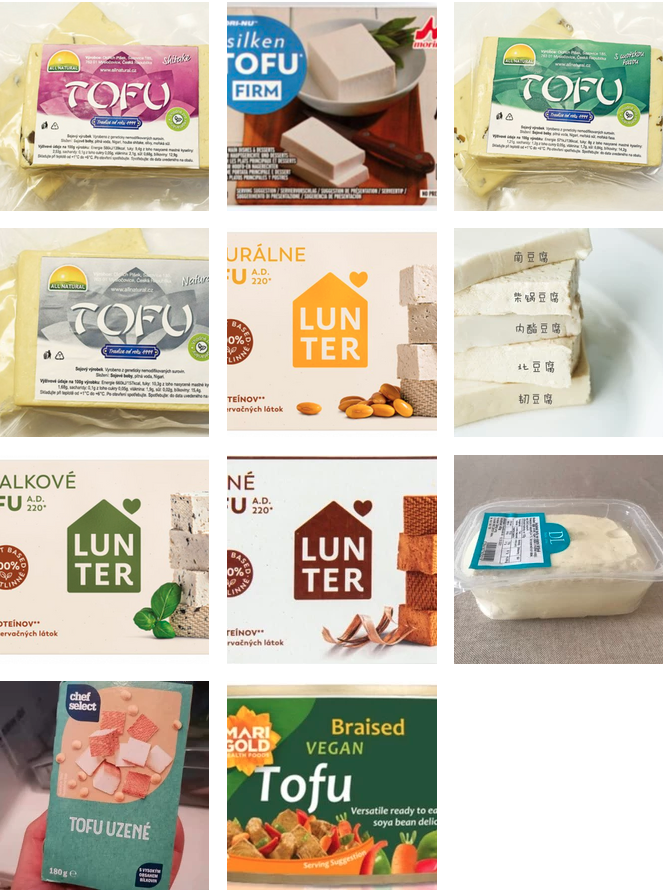
Source:
https://baike.baidu.com/item/%E8%B1%86%E8%85%90/272285
https://en.wikipedia.org/wiki/Tofu
https://baike.baidu.com/item/%E8%B1%86%E8%85%90/272285
https://zh.wikipedia.org/wiki/%E8%B1%86%E8%85%90
http://shanxiwhly.com/mswh/660.html
More information about pure diet and recipes can be found on our blog.
Thank you for reading!
Purelife Praha
